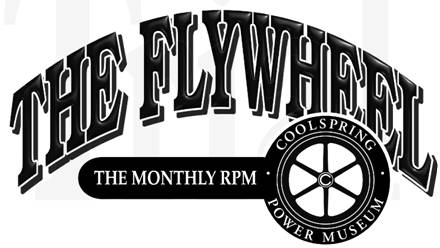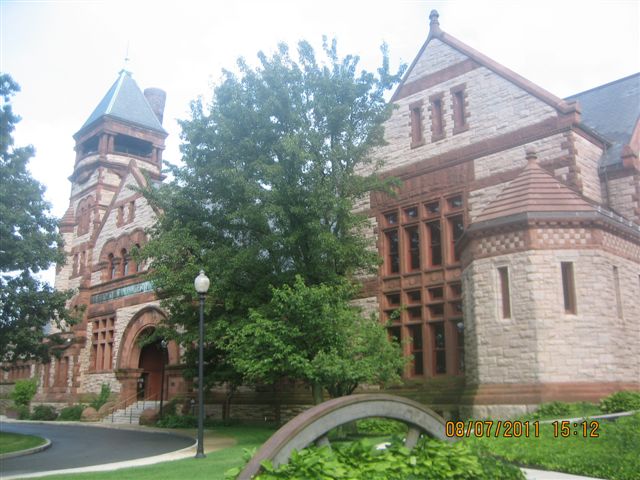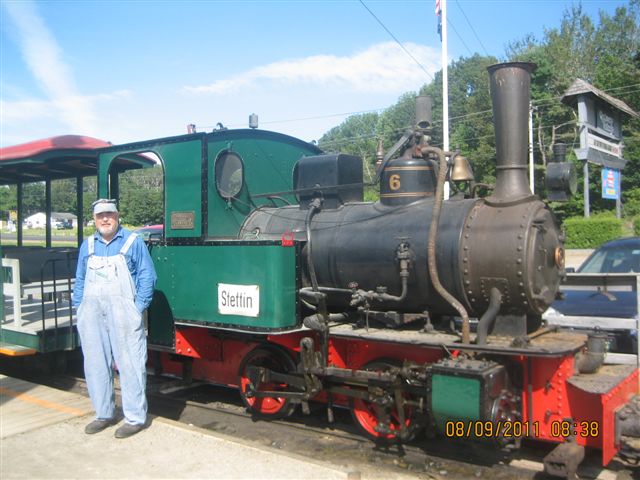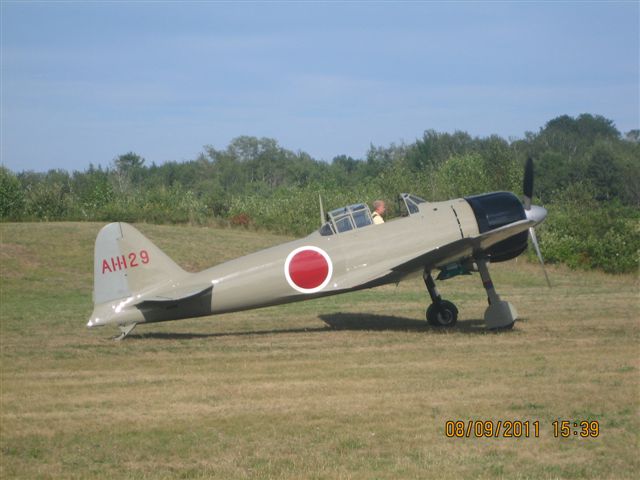
November 2011
Some New England Museums
By Paul Harvey
During August, I decided to take a week off work and visit some museums in New England. I call to my friend, Tom Rapp, and all was set for a great adventure. After spending so many hours at Coolspring, it is good to visit other museums and see how they operate and display their collections. We decided to visit some old friends as well as make some new contacts. Advertising is always important and there is no better way to advertise than visit other collections and locations. We did have a great trip, made new friends, and brought back some ideas to incorporate here at CPM.
Our trip included much rainy weather but then isn’t that always Coolspring. We made a list of some locations and decided to find others as we traveled. Traffic is always horrible in Connecticut and Massachusetts but then New Hampshire and Maine are so pleasant. We decided to take a coastal route and follow old US 1 instead of taking the interstate highways. It was scenic but often very slow through the small picturesque villages. We traveled the coast all the way to Lubec, Maine and crossed the International Bridge to Campobello Island, Canada to visit Franklin Roosevelt’s summer home. For any seafood lover, there is nothing better than Maine fried clams that are available in little roadside stands!!
Sharing a few of our visits, I wish to start with the Boston Waterworks Museum. The Metropolitan Water Works was built in 1886 as a huge Romanesque castle to bring pure water from the distant Berkshire Mountains. As that time, the Boston water supply was local wells and the city was disease ridden. Pure water would cure the problem. They had the first lab in the USA to do water analysis for bacteria! Photo 1 shows this magnificent building as it appears today as a monument to pure water. There are three huge engines preserved inside. The first engine put in service was a magnificent pumping engine designed by Erasmus Darwin Leavitt who was known for early steam design. But the most impressive was the Allis, built by E. P. Allis of Milwaukee. This engine was installed in 1916 and is shown in photo two. The Allis is the largest of its kind extant and could pump 30 million gallons of pure water per day. It was in operation until the mid-1950s and although static now, shows a proud heritage. Photo 2 shows Tom with the huge engine. I think that this demonstrates how engines, even not running, can be displayed and tell an important story.
Another interesting and learning stop was the Seashore Trolley Museum in Kennebunkport, Maine. They have the biggest collection of restored and operating trolleys in the entire country! This is a rather small museum and one can walk around at his pleasure and view all the items. Perhaps the most important part is the optional hands-on experience. For a small additional fee, one can learn to operate a trolley with a one to one experience with the motorman. I chose to do so and Photo 3 shows the trolley that I actually operated. There is a two mile part of the old trolley railroad preserved and this was the experience. I was amazed with the controller and how complicated it was to operate, as well as the air brakes and trying to slowly stop the car at a desired location. I succeeded with my test and run and Photo 4 shows motorman Jim Middleton and myself after the run. This was an experience that I will never forget. This museum demonstrated how important hands on operation of the equipment can be.
Another stop was the Boothbay Railway Museum. Boothbay is a bit off Rte. 1 on a peninsula and still a quaint and interesting village. One can spend many hours walking the crooked and narrow streets that at one time was a booming fishing town. I have long heard that they had a 36 hp Otto gas engine and indeed they do. It is very old with the belt driven oiler and eight spoke flywheels. It does run for their scheduled events. It was fun to have time to inspect it in detail. But there was so much more! There were many building displaying all kinds of equipment such as gas engines, firetrucks, and old tractors. But the main attraction was the two mile loop railroad powered by a 1934 German built Henschel steam locomotive of two foot guage. We took the ride around the grounds on the train and enjoyed listening to the steam exhaust as the engine worked on the grade. Photo 5 shows the little locomotive and its engineer.
No trip to Maine is complete without stopping at the Owl’s Head Transportation Museum in Rockland. We have been friends there for many years and indeed our Augsburg air injection engine became possible from them. They feature vintage aviation and have many shows that their planes actually fly. But also shown are all types of mechanical equipment including many gas engines. A ride in one of their vintage biplanes is absolutely thrilling!! We were in time to see one of two still flying Japanese Zero planes, there for an airshow one week prior, take off and head to its next destination.. See Photo 6 as it taxis on the grass strip. After enjoying all their displays, we bid good bye to Charlie Chiarchiaro, executive director, and head on. The last photo, Photo 7, shows Charlie and me as he was readying for his next event.
I hope you have enjoyed this brief tour of some neighboring museums. There are many more to enjoy. By the time you are reading this, our museum is closed for the winter. The next issue of The Flywheel will be a report of the October show at CPM and it will be written all winter. But please keep in touch and follow our web site or call 814-849-6883, Next year we will feature Ohio Built Engines as well as the 125th Anniversary of Foos. CPM will open on April 21 and 22, 2012. Hope to see you then and have a good winter!

Photo 1: Boston Waterworks Museum

Photo 2: Tom Rapp and the Allis

Photo 3: One exhibit at the Seashore Trolley Museum

Photo 4: Paul Harvey and Motorman Jim Middleton

Photo 5: Henschel Engine and Engineer at Boothbay Railway Museum

Photo 6: Zero on taxi for takeoff

Photo 7: Charlie Chiarchiaro and Paul Harvey